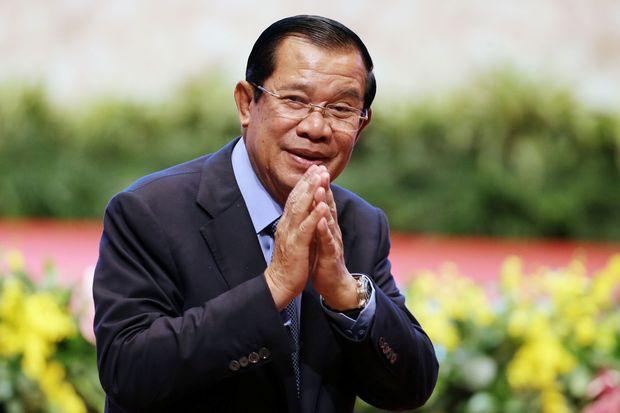February 19,2019
‘The Vagina Monologues’: Untold stories of womanhood

It was in 1996 when Eve Ensler’s “The Vagina Monologues” premiered in New York City. More than two decades on, the episodic play continues to draw women together and inspire them to embrace their bodies and womanhood. During last week’s Phnom Fem Fest, “The Vagina Monologues” was brought again to Phnom Penh to empower Khmer women, writes Som Kanika.
Drawing inspiration from the an episodic play “The Vagina Monologues” written by Eve Ensler and was first performed in 1996, a group of local and expat women worked hard to bring the motivational play to Cambodia in time for the Phnom Fem Fest which began on February 15.
“The Vagina Monologues” explores consensual and nonconsensual sexual experiences, body image, genital mutilation, direct and indirect encounters with reproduction, sex work, and several other topics through the eyes of women with various ages, races, sexualities, and other differences.

Shauna O’Mahony, Men Sonita, Emily Marques, Phoebe Ray and Alex Kennett – the directors of the Phnom Fem Fest – said that playing the thought-provoking “The Vagina Monologues” story in Phnom Penh was meant to inspire and empower Cambodian women to embrace their womanhood and fight for their rights. With its three-night run from February 15 to 17, the play drew a large crowd at the Chinese House on Preah Sisowath Quay.
The Vagina Monologues is made up of various personal monologues read by a diverse group of women. Originally, Eve Ensler performed every monologue herself, with subsequent performances featuring three actresses, and more recent versions featuring a different actress for every role. Each of the monologues deals with an aspect of the feminine experience, touching on matters such as sex, sex work, body image, love, rape, menstruation, female genital mutilation, masturbation, birth, orgasm, the various common names for the vagina or simply as a physical aspect of the body. A recurring theme throughout the piece is the vagina as a tool of female empowerment, and the ultimate embodiment of individuality.
The play – first performed Off-Broadway and in locations around the world by Ms Ensler – delves into the mystery, humor, pain, power, wisdom, outrage and excitement in women’s experiences. V-Day grew out of the play which exploded onto the scene in 1998, breaking taboos about women’s sexuality and shattering silence around violence done to women and girls. Strong language and sexual content. Recommended for ages 16 and older.
Having committed in the play writing and rehearsal for more than three months, Ms Sonita, emphasised that, “In this country, the word ‘vagina’ is one of the most sensitive topic and not too many women have the courage to talk about it. However, we can see that there are many issues that we need to know and discuss about vagina, such as health issues, its beauty and function. But talking about these seemed to cause condemnation before because it contradicts the code of conduct set for women in Cambodia. By creating this festival and performance, we want to change how women and the society in general see this sensitive topic. We want to break taboos in term of discussing a woman’s body in publich. We want to encourage more women to talk about the importance of their body because there’s really nothing to be ashamed of.”
Ms Sonita further note, “The inspiration leading me to take part in this festival and performance is my family. I grew up in an environment where my family gave me freedom to follow what I believe is right, and they listen to my opinion. And taking part in this festival and creating it up is part of my core desire to see Cambodian women in the next generation to have this kind of freedom, too.”
“The Vagina Monologues” producer and director Alex Kennett, who has been living in Cambodia for 21 months now, noted that the play had been performed in Cambodia a few times before and people enjoyed it very much. “But this year, we would like to change some things including the Khmer translation and the participation of Khmer women performers, which is really important to us because what the monologue has to say is something that is for women everywhere. And I find that the ideas are really powerful so we wanted to bring it here.”
One of the interesting facts about the three-day Phnom Fem Festival and “The Vagina Monologues” performances was the producers and directors’ choice of highlighting specific issues that are relevant in Cambodia’s present situation.

“Each year they make a new issue that they want to focus on and for this year one of among the three spotlights is ‘incarceration of women’ which was in line with the 40th anniversary of the end of Khmer Rouge. It talked about the story of imprisonment of women at that time,” Ms Kennett said.
A theater performer and enthusiast, 22-year-old Ham Sovanpidor, was glad to be part of the play and deliver a strong message to her fellow women.
“This event is created for women and having women to participate in is really important in a way that shows Cambodia women should have a courage to talk more about her sex matters because the performance will feature many aspects of feminine experiences related sex beauty, menstruation, organism and more which are all related to women in general and it is vital for them to know too,” said Ms Sovanpidor, a student at the Department of Media and Communication.
Phnom Fem Fest is a registered international V-Day event, and this year’s V-Day spotlight was focused on ending gender-based violence and supporting previously incarcerated women. All profits from Phnom Fem Fest would go directly to Early Years Behind Bars, an initiative from a local human rights NGO that supports women, mothers and children in Cambodian prisons.












